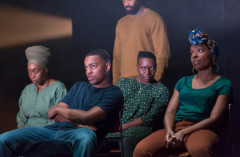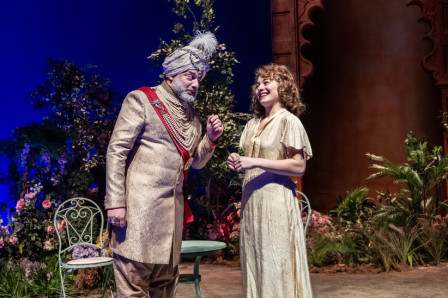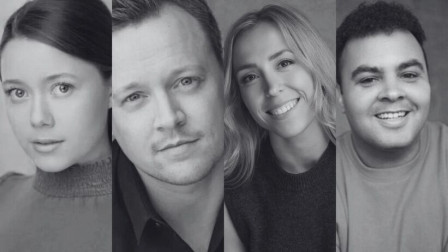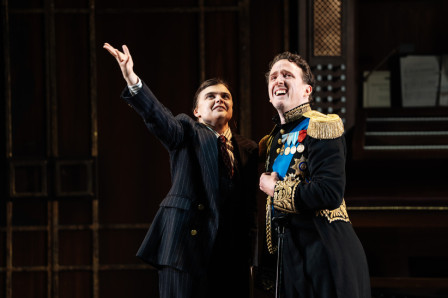Review: EAR FOR EYE at The Royal Court
 Writer and director Debbie Tucker Green explores some pertinent things in her new play at the Royal Court.
Writer and director Debbie Tucker Green explores some pertinent things in her new play at the Royal Court.
Do fish in a pond realise their water is stagnant before they die? Have words like “Change” and “Revolution”, that years ago meant overcoming tyranny, been monopolised by banks to sell life insurance?
In asking those questions she exposes the struggle between younger and older African Americans and Black British people, challenging the way we acknowledge racism.
This play is divided into three parts. Part one is a collage of scenes performed by a very strong ensemble of actors. Each episode, fragment, and intimate interaction is an evidence of how oppression is still so ingrained in us. Many of the scenes are actually confrontations. It seems to be universal that when combating a common enemy, most fighting happens between people on the same side.
The lines are sharply cut off, interjected, and the hammering repetition defines these characters' exasperations. This play barely talks explicitly, refusing to specify what the conversations are really about, encouraging active listening from the audience who must draw their own conclusions.
The stage and light design are admirably minimal, only using some chairs and the revolving stage, allowing for total focus on the text.
In Part Two the first white actor appears, representing the white middle-class male, interacting with a young black woman. His entitlement was hilarious, and his pain threshold pathetically low.
Part Three is short film documenting American and British Laws that dictated segregation from 1943 to 1956. It’s alarming how recent this “past” is and how forgotten it now feels.
Honouring the boldness of the play I will conclude by saying that it felt like a call for arms. Inflammable, unapologetic and to the point.
Latest News

 Indian Ink at Hampstead Theatre Review
16 December 2025 at 16:41
Indian Ink at Hampstead Theatre Review
16 December 2025 at 16:41

 New cast members announced for Titanique in the West End
16 December 2025 at 15:26
New cast members announced for Titanique in the West End
16 December 2025 at 15:26

 Production images released for London transfer of Twelfth Night
16 December 2025 at 15:16
Production images released for London transfer of Twelfth Night
16 December 2025 at 15:16

 Is Sunday in the Park with George, starring Jonathan Bailey and Ariana Grande, heading to London?
16 December 2025 at 14:34
Is Sunday in the Park with George, starring Jonathan Bailey and Ariana Grande, heading to London?
16 December 2025 at 14:34
